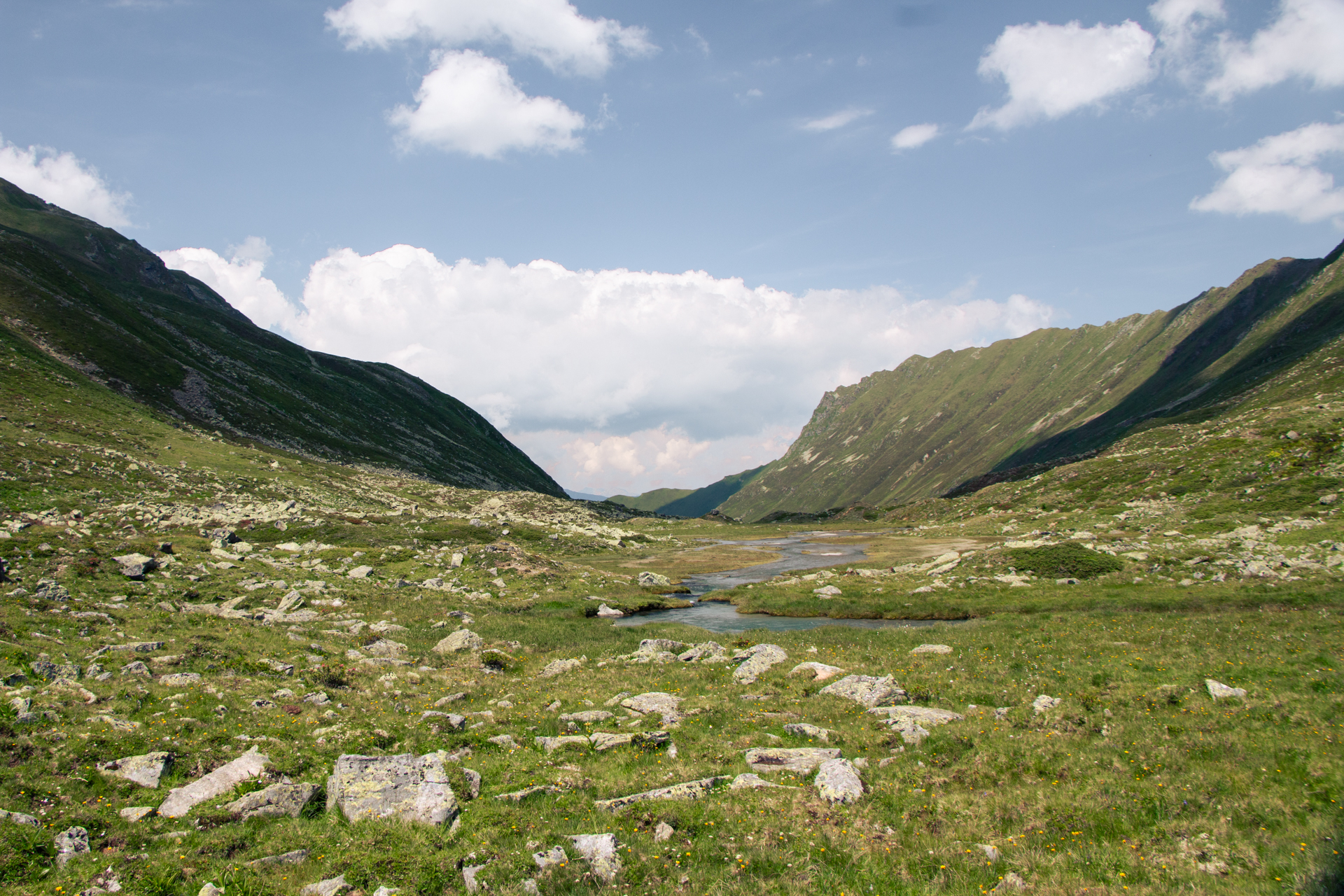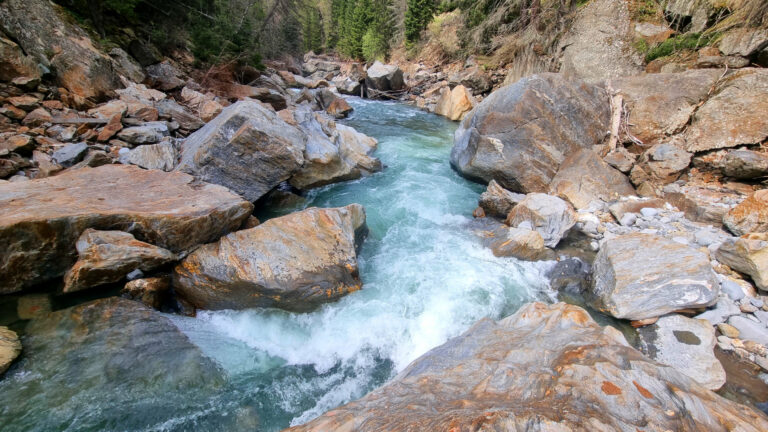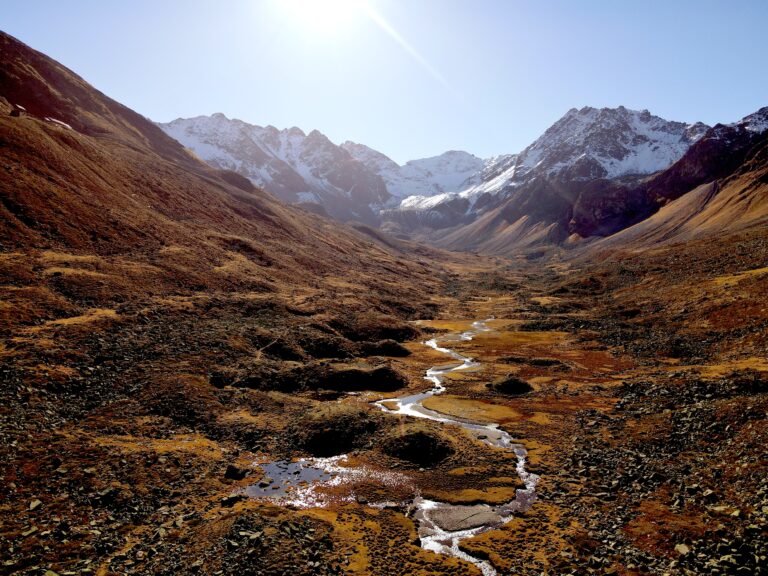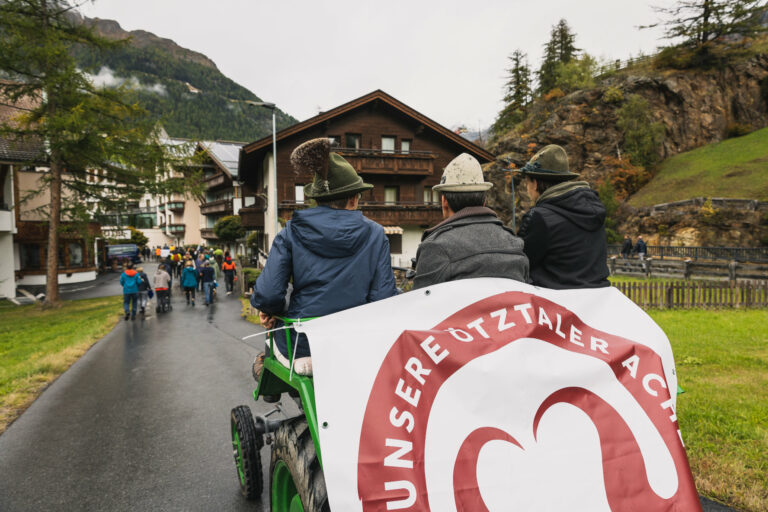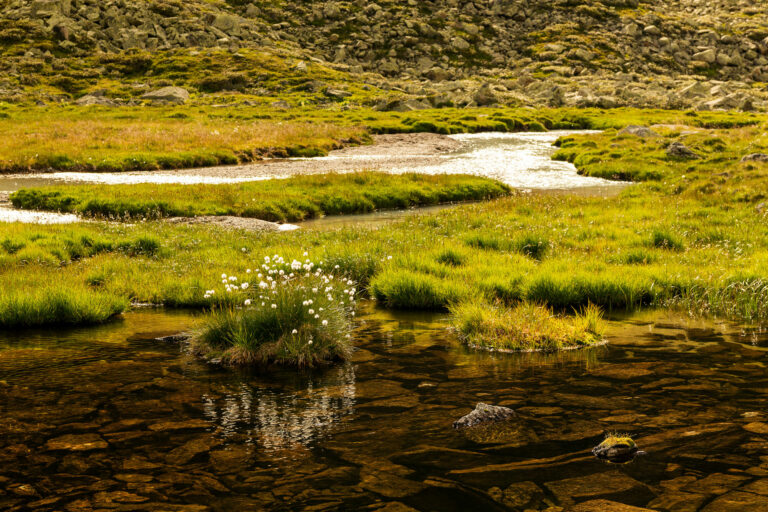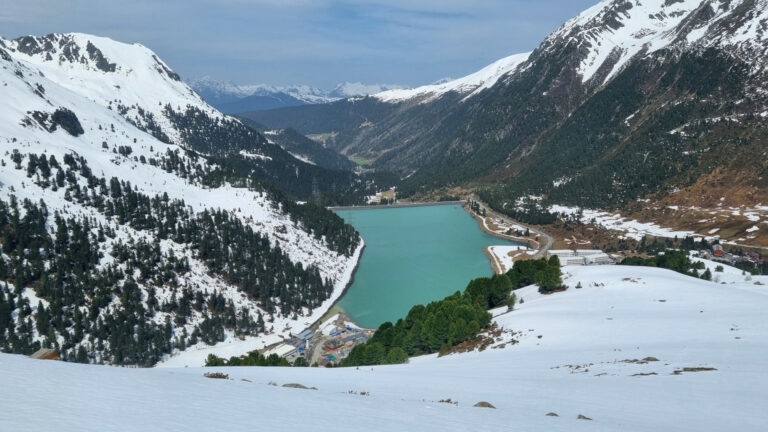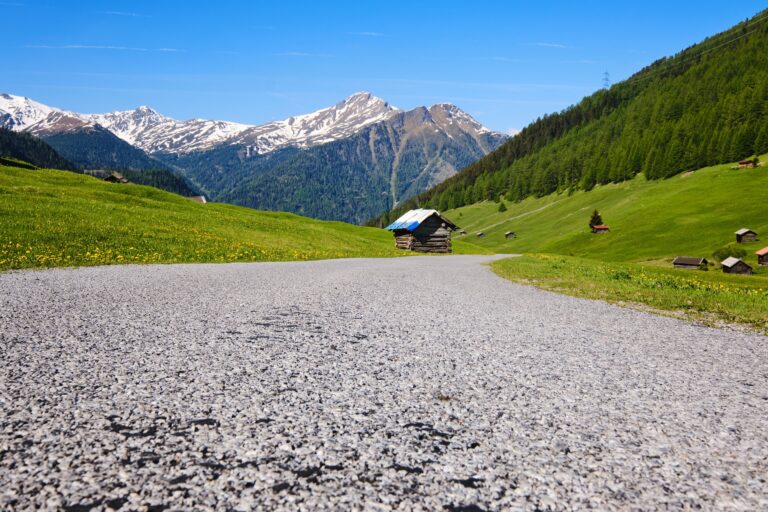Proposed Platzertal Reservoir – Too Large, Too Small, or Both?
Since TIWAG has announced that it plans to first seek approval for the pumped storage part of the overall project for the expansion of the Kaunertal power plant and later submit the rest of the project, we will take a closer look at this part. The partial approval will concern the pumped storage power plant (PSKW) Versetz, along with the associated upper level to the existing Gepatsch Reservoir – i.e., the planned Platzertal Reservoir.
Two of TIWAG’s main arguments for the PSKW Versetz are: First, storage is needed to buffer the unreliable renewable energy sources, wind power and photovoltaics. Second, “storage is needed” to reduce the winter gap (1).
Upon closer examination of these two goals for the PSKW Versetz, it becomes clear that, firstly, they hinder each other, and secondly, the volume of the Platzertal storage is neither appropriately designed for one nor the other.
Pumped storage plants are typically used for storage durations of a few hours to days. Over these time periods, they operate economically and are used to compensate for fluctuations in electricity production and consumption (2). On average, the pumped storage plants in Austria operated for 4.0 hours in pump mode and 5.3 hours in turbine mode in 2021 (3, p. 10).
Does this match the capacity of the planned storage in Platzertal? This is supposed to have a volume of about 42 million cubic meters. With the planned turbine output, this results in a storage duration of around 160 hours, or almost 7 days (2, p. 4). Compared to the average storage durations of about 4-5 hours, this is completely oversized.
Can this project help reduce the winter gap?
The winter gap refers to the situation where Tirol produces little electricity in the winter, less than what is needed. This is mainly due to the fact that run-of-river power plants produce little or no electricity in winter. Additionally, photovoltaic systems generate less power in winter than in summer.
To store water in the Platzertal Reservoir for winter, water would need to be pumped up during the summer and could be used for power generation in the winter (3, p. 4). However, this contradicts the economic use of the facility with regularly alternating pump and turbine operation (3, p. 4). And if this does not lead to profit, it is unlikely that the storage will be used in this way – because TIWAG operates for profit.
At the same time, the volume of the Platzertal storage intended for pump and turbine operation would need to be reserved in the Gepatsch Reservoir (regardless of which of the two reservoirs the water is currently in). This would limit the current function of the Gepatsch Reservoir as a storage for winter – to reduce the winter gap. The following diagram illustrates this:
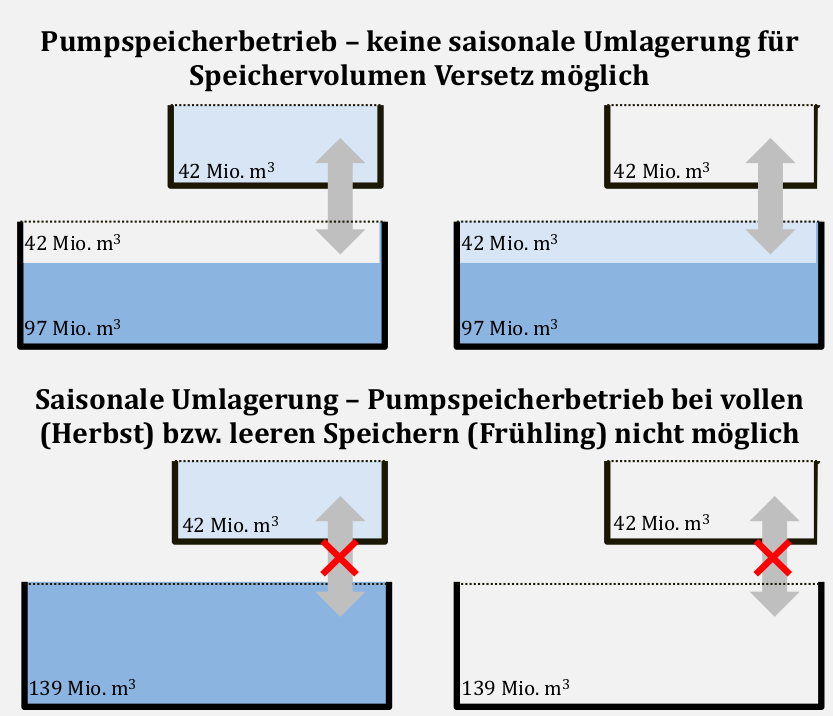
No Alternatives?
To balance fluctuations in the production of wind energy and photovoltaics, as well as fluctuations in electricity consumption, battery storage would be a very good option. They cover storage times from a few hours to several days (3, p. 11).
Sources & Links
- https://www.erneuerbareplus.at/kaunertal/gut-zu-wissen
- Dr. Jürgen Neubarth, Vorschlag für eine Standortalternative zum Pumpspeicherkraftwerk Versetz mit Speicher Platzertal, 2024
- Dr. Jürgen Neubarth, Energiewirtschaftliche Einordnung Pumpspeicherkraftwerk Versetz mit Speicher Platzertal, 2023

